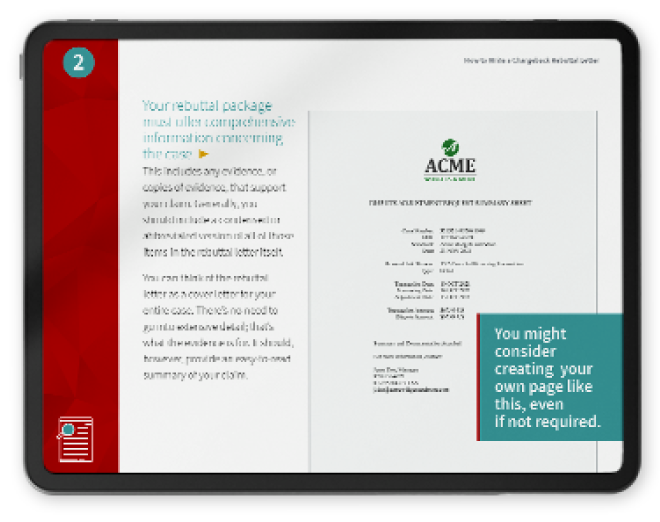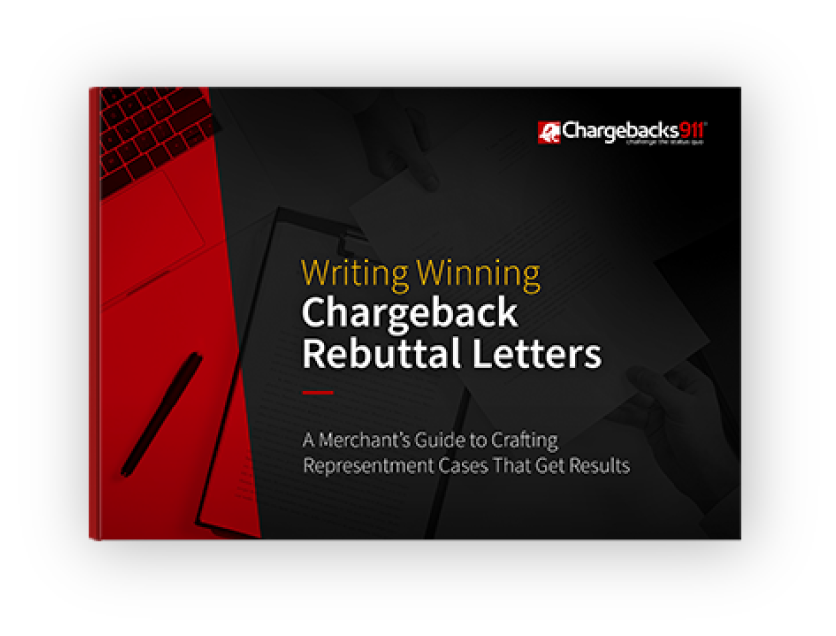Mastercard Chargeback Rules: The Ultimate Guide
More than 110 million merchants in 210 countries across the world accept Mastercard. This includes 10.7 million sellers in the United States alone. Meanwhile, the payment juggernaut counts 3.1 billion cards in circulation, making them second only to Visa in terms of global market penetration.
Merchants celebrate Mastercard for its relatively low fees, built-in fraud prevention tools, wide customer reach, and valuable analytical tools.
Of course, these privileges don’t come cheap. Beyond interchange fees, merchants who accept Mastercard must inevitably contend with the card network’s chargeback process. This is a tightly-regulated system that’s loved (and sometimes abused) by cardholders…much to the chagrin of merchants.
Given this fact, you’d be wise to familiarize yourself with Mastercard’s dispute rules. In this post, we explore how Mastercard chargebacks work, how to respond to them, what guidelines to be aware of, and how to prevent them going forward.
Recommended reading
- Mastercard Dispute Resolution: What You Need to Know
- What are Mastercard Chargeback Fees? The Rundown for 2025
- Mastercard Chargeback Time Limits: The 2025 Guide
- Mastercom | What Is it? How Does Collaboration Work?
- How Mastercard First-Party Will Fight Video Game Disputes
- The Merchant's Guide to Mastercard Debit Card Chargebacks
The Basics: How Do Mastercard Chargebacks Work?
The Mastercard chargeback process starts when a cardholder disputes a transaction made with a Mastercard credit or debit card. A cardholder can file a valid dispute for a limited number of legitimate reasons. But, some of the most common complaints include fraudulent or unauthorized activity, receiving missing, defective, or damaged products or services, or being charged the wrong amount.
The Mastercard chargeback process goes as follows:
Mastercard Reason Codes: Why Do Mastercard Chargebacks Occur?
Every Mastercard chargeback is assigned a reason code that gives you more information about why a chargeback was filed.
Each card network structures and names its reason codes differently. Mastercard has consolidated their system under six broad chargeback categories. These include:
After Mastercard restructured its chargeback reason codes, Visa followed suit when it launched Visa Claims Resolution (VCR) in April 2018.
Mastercard Excessive Chargeback Merchant Program
Mastercard’s Excessive Chargeback Merchant (ECM) program is a dispute monitoring and compliance program that helps you take corrective actions to reduce their chargeback ratios.
Your chargeback ratio is calculated by dividing the total number of transactions processed in the previous month by the number of chargebacks received in the current month. If you get more than 100 chargebacks a month and see a chargeback ratio in excess of 1.5% of transactions, you’ll automatically be subject to monitoring. Once enrolled, you’re subject to additional rules, restrictions, reporting requirements, and fees.
Mastercard’s chargeback monitoring framework is unique in that the fees scale with time. For example, you are not assessed a surcharge in the first month. In the second month, surcharges are capped at $1,000, but can balloon to $100,000 per month for months 19 and above.
Depending on severity, sellers will be placed into one of two programs:
| Mastercard Dispute Monitoring Program | Number of Monthly Chargebacks | Monthly Chargeback Ratio |
| Excessive Chargeback Merchant Program | 100 to 299 | 1.50% to 2.99% |
| High Excessive Chargeback Merchant Program | 300+ | Greater than 3% |
Merchants who keep their chargeback ratios below the chargeback threshold for three months can exit the program. Merchants who cannot come into compliance, however, may have their accounts frozen or closed. In severe cases, they may even be blacklisted.
Learn more about Mastercard chargeback limitsMastercard Compliance: Resolving Disputes When Mastercard Chargeback Rules Don’t Apply
On occasion, one party may accidentally or deliberately breach the Mastercard Rules and Standards, causing the other party to experience a financial loss. When this happens, the affected party may file a compliance case for banks to reach a resolution. If unsuccessful, Mastercard can be asked to step in to help resolve.
Compliance cases can only be filed under limited circumstances. Mastercard prohibits the filing of compliance cases, for instance, when a chargeback and arbitration case process is ongoing, or when one party receives a double refund. In these instances, the parties should work through the established dispute process first.

A compliance case should not attempt to circumvent Mastercard’s Fraud Notification Service. Similarly, it should not be used to resolve claims that can be addressed through the Card Acceptor Business Code (MCC) Performance Program.
On the other hand, a compliance case may be filed if one party intentionally or unintentionally violates any of Mastercard’s Rules and Standards and causes financial loss to another party. Before a case is filed, the breaching party is given a chance to remedy the violation in what is known as a pre-compliance case. If the breaching party fails to fix the issue, the compliance case may proceed.
Responding to Mastercard Chargebacks: Document Requirements & Deadlines
If you believe a chargeback is invalid, you can challenge it via representment. To successfully challenge a dispute, sellers must compile evidence and submit rebuttals that follow Mastercard’s strict timeframes and guidelines.
You have 45 days to submit their evidence. Acquirers frequently impose tighter deadlines, though, as it buys them time to review the presented evidence before submitting it. In all cases, it’s the stricter deadline that applies. If an acquirer gives you 10 days to respond, then from your perspective, that’s the real deadline; not Mastercard’s 45 day time window.
In terms of evidence, you should keep it compelling and relevant. Examples of convincing evidence include proof of payment authentication like 3-D Secure for unauthorized chargeback claims, proof of shipping records for product not delivered claims, a copy of your refund and return policies, and communications with the customer.
In addition to evidence, which should be uploaded as JPEG or PDF files under 14.5 megabytes in size, you should submit a well-drafted rebuttal letter that summarizes the evidence presented and explains why the disputed transaction should resolve in the seller’s favor.
Learn more about Mastercard chargeback time limitsAvoiding Mastercard Chargebacks: Disclosure for Returns, Exchanges, & Cancellations
When a cardholder is dissatisfied with a product or has difficulties returning the product due to your “tough” refund policies, the buyer may resort to chargebacks. To prevent this, and to stay in compliance with Mastercard’s Transaction Processing Rules, you must disclose refund and return policies on transaction receipts, on your website, on signage in a storefront, or at check-out.
In general, all disclosures should be “sufficiently prominent and clear.” Terms may specify conditions under which returns or exchanges are allowed. They may also list products that are non-refundable or non-exchangeable, address deadlines and time windows, name the party responsible for return delivery charges, or describe refund restrictions (e.g. in-store credit only, original receipt required, etc.).
eCommerce merchants who accept subscription or recurring payments are subject to additional rules, and must communicate related terms “separately from any other terms.” In addition, Mastercard cardholders must have the opportunity to “specifically accept” recurring billing terms (for example, by checking an “accept” box) in order for those terms to be valid.
When the Dispute Remains Unresolved: Mastercard Chargeback Arbitration
Occasionally, you and an issuer may reach an impasse. When the parties can’t resolve a chargeback on their own, they may submit the case to Mastercard for arbitration. This is the final stage of the Mastercard dispute process, and it occurs after none of the previous stages (i.e. first chargeback, second presentment, and pre-arbitration) result in a resolution.
All Mastercard chargeback arbitration cases are managed via the Case Filing application in Mastercom, which is the card network’s in-house chargeback resolution tool. Once evidence and rebuttals are uploaded, Mastercard representatives review the case based on its technical merits and substance. Precedent, along with how the case could impact Mastercard, are also considered.
Like other card networks’ arbitration processes, Mastercard’s is slow and expensive: a ruling costs at least $700 and can take between 3 and 6 months to render. If the losing party wishes to appeal Mastercard’s decision, they may do so at an additional cost of $500. Even then, there’s no guarantee of winning.
Learn more about Mastercard arbitrationTake the Next Step to Comply With Mastercard Chargeback Rules
Mastercard chargeback rules are complex for everyone involved. As a merchant, this can feel overwhelming. After all, you’re an expert in your business… but you aren’t a payments industry expert.
So, what happens when you’re hit with chargebacks that proceed to arbitration? Or you find yourself skirting dangerously close to Mastercard’s ECM thresholds?
One solution is to call in the experts.
Chargebacks911®’s team of industry veterans can help you navigate the convoluted chargeback process, prevent invalid disputes, reduce your chargeback rates, and fight chargebacks effectively. Reach out to us for a no-obligation ROI analysis today.
FAQs
How does a chargeback work on Mastercard?
A Mastercard chargeback is initiated when the cardholder files a dispute with the bank that issued their Mastercard. When this occurs, the issuer contacts the acquirer and supplies a chargeback reason code. Mastercard then takes funds associated with the transaction under dispute from the merchant’s account at the acquirer and returns them to the cardholder’s account at the issuer.
What is the 540 days chargeback rule for Mastercard?
The chargeback rules for Mastercard transactions state that, in most cases, cardholders have 120 days to file a chargeback. But, there are some situations in which the cap is extended to 540 days from the transaction date. For example, let’s say a cardholder subscribes to an ongoing gym membership. Halfway through the year, the gym goes bust. The issuer can raise a chargeback under reason code 4853 (Services Not Provided) within 120 calendar days from the date the gym went bust. But, this date must not exceed 540 days from the transaction date.
What is the chargeback threshold for Mastercard?
Merchants exceed Mastercard’s excessive chargeback threshold when they receive more than 100 chargebacks per month and record a chargeback-to-transaction ratio (i.e. number of chargebacks divided by number of sales, multiplied by 100%) of 1.5% or greater.
What are the conditions for chargeback?
Cardholders may file a chargeback if they were the victim of fraud or unauthorized activity, or if they experience merchant billing errors. Defective, damaged, or missing goods are also valid conditions for filing a chargeback.
Is Mastercard good with disputes?
Mastercard provides merchants with easy-to-use dispute management tools, relatively generous chargeback time limits for both cardholders and merchants, and multi-factor authentication security measures that merchants can use to enhance security and mitigate fraud risks at checkout.















